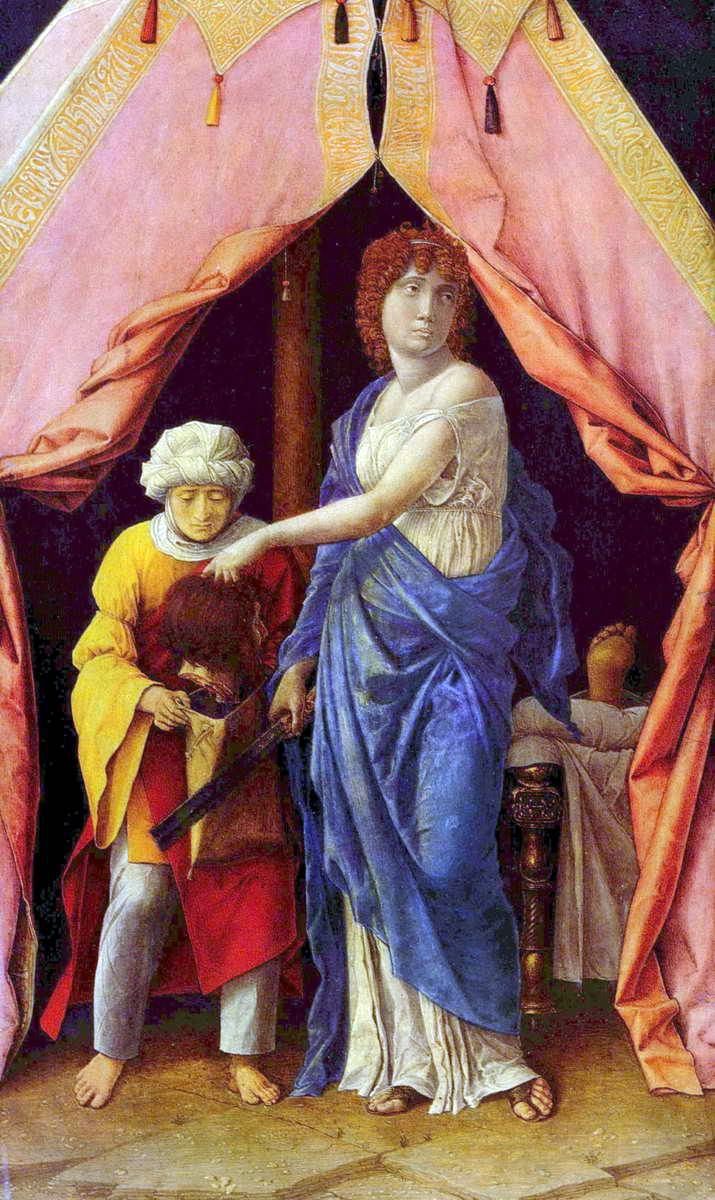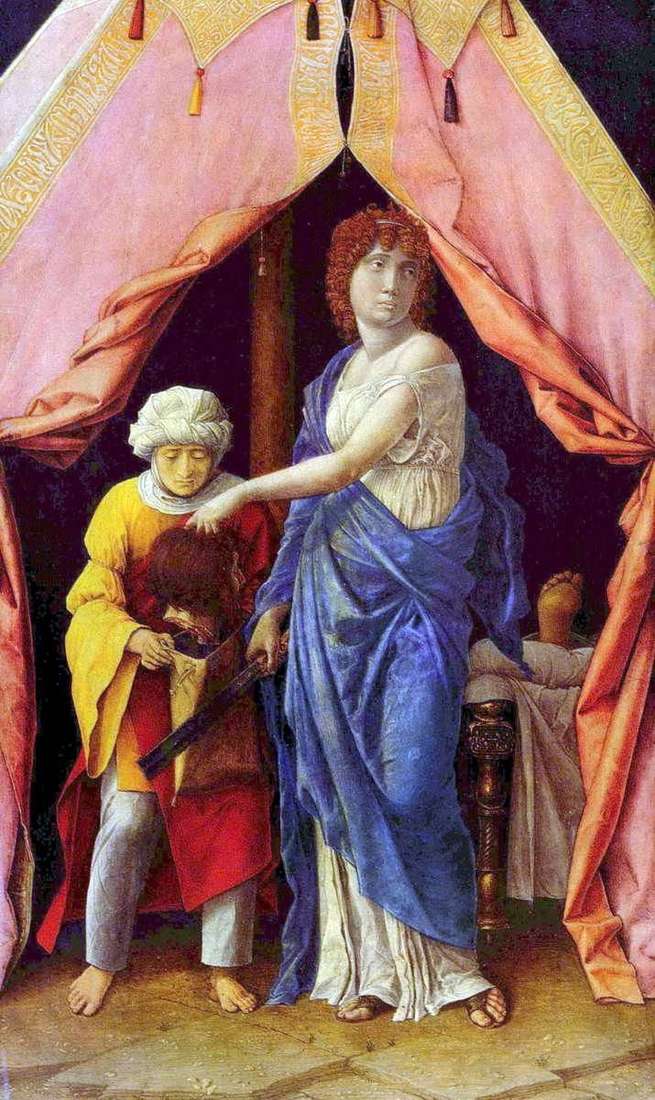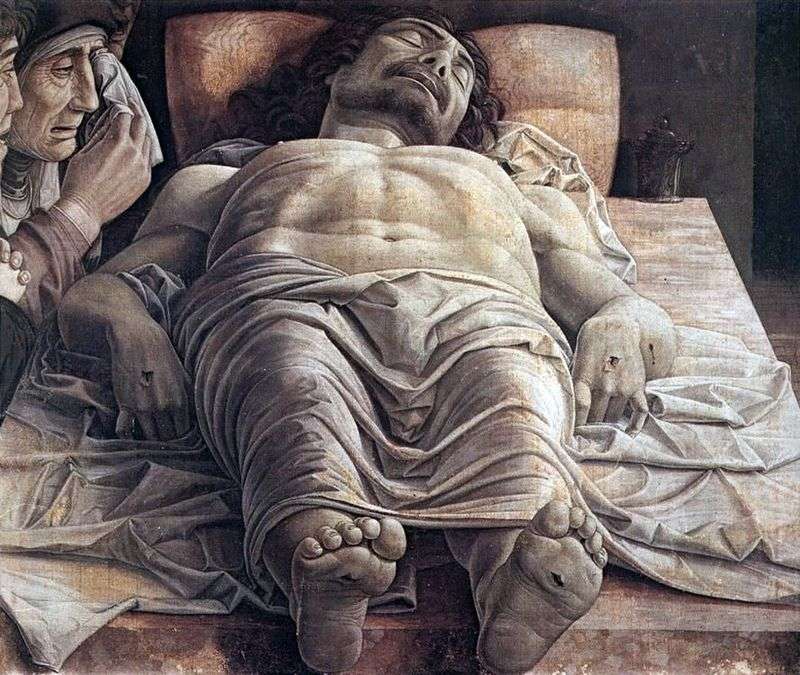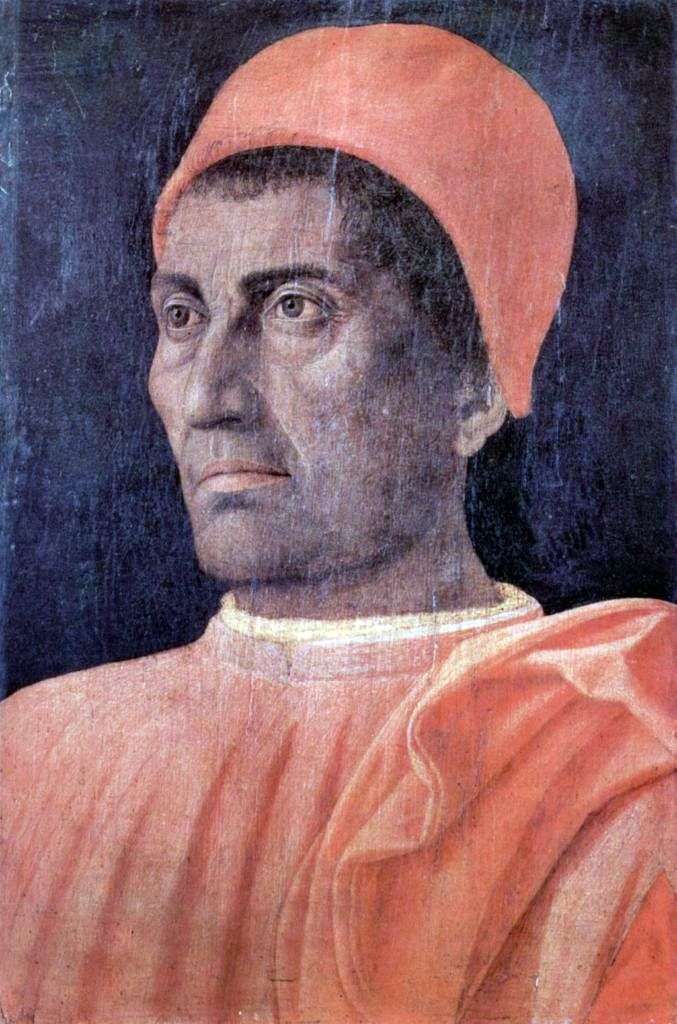
Mantegna was the first to switch from Christian to ancient themes and first to study the anatomy of the naked body. He first began to study the nature of the movement, the mechanism of muscle contraction. He enriched the new laws and composition of paintings.
He never met with faces drawn only as portraits, the number of which could be arbitrarily increased. All the figures are involved in the action, all are subordinated to a solidly cohesive whole. A new beauty of composition was discovered that does not tolerate the former, so beloved careless stringing of details.
Mantegna is considered the founder of painting on canvas. The earliest pictorial canvas in Italy is the Mantegna painting “Holy Euphimia”, created in 1454. Vasari wrote that, during the writing of the cycle of paintings “The Triumph of Caesar” for the palace theater in Mantua in 1482-1492, Andrea Mantegna already had a lot of experience working on canvas.
The artist, who avoided any classification, standing outside of schools and directions, Mantegna had an indisputable impact on the painting of Italy – from Padua to Venice. Thanks to the widespread engravings of Mantegna, the Italian Renaissance penetrated into Germany.
 Judith et Holofernes – Andrea Mantegna
Judith et Holofernes – Andrea Mantegna Judith y Holofernes – Andrea Mantegna
Judith y Holofernes – Andrea Mantegna Saint Sebastien by Andrea Mantegna
Saint Sebastien by Andrea Mantegna Adoration of the Shepherds by Andrea Mantegna
Adoration of the Shepherds by Andrea Mantegna Lamenting the Dead Christ by Andrea Mantegna
Lamenting the Dead Christ by Andrea Mantegna Crucifixion by Andrea Mantegna
Crucifixion by Andrea Mantegna Male Portrait by Andrea Mantegna
Male Portrait by Andrea Mantegna Prayer of the Chalice by Andrea Mantegna
Prayer of the Chalice by Andrea Mantegna